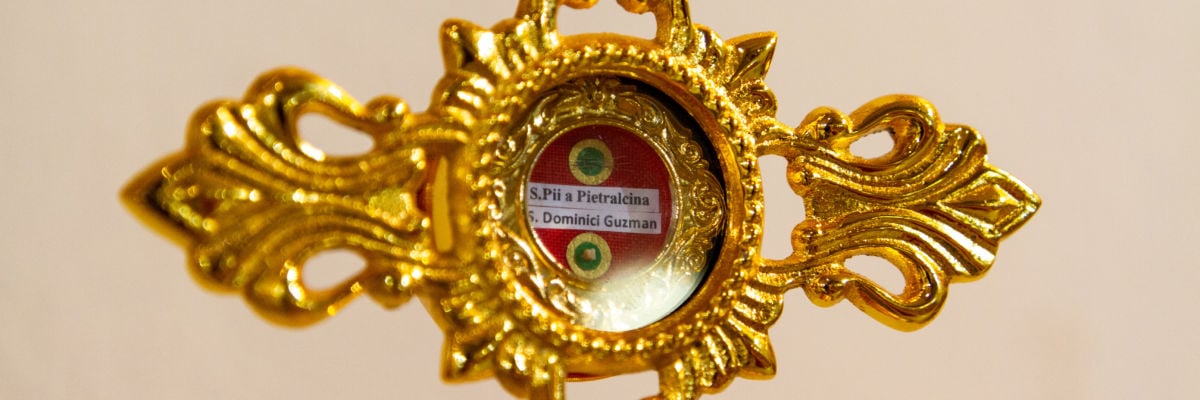
Question:
Answer:
The classes of relics are:
- First class: an actual part of the saint (e.g. bone fragment, hair, etc.) or directly connected to the Lord’s Passion (e.g., a sliver of the true cross)
- Second class: something that was owned by the saint or something that was used to torture a martyr
- Third class: anything that has touched a first-class relic
While relics can be transferred from one person or group to another for a moderate fee to cover costs of transfer or display, it is absolutely forbidden to sell the relic itself (can. 1190 §1).
The authenticity of a relic is a matter of prudential judgment. A relic that comes from the saint’s religious order is almost certainly authentic. A “relic” being sold in a back alley almost certainly is not authentic. Most, obviously, fall somewhere in the middle, and simple judgment is needed to distinguish them. The Church does on occasion “certify” (for lack of a better expression) certain relics, but this is a fallible process, and for the majority of claimed relics we are left to use our judgment.
The reason that authentic relics are important is that they do indeed help us to have faith. In the same manner that I still keep things owned by deceased relatives and friends as a way of keeping a connection to them, relics help keep us connected to the saints and the inspiration of their lives.



